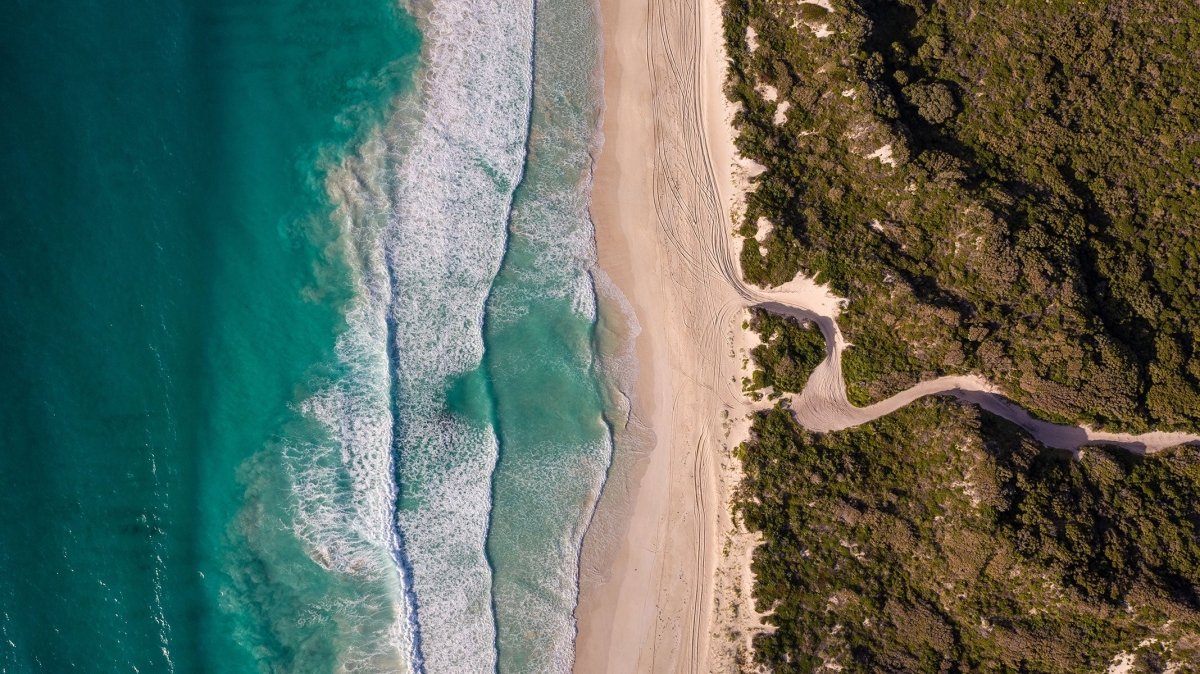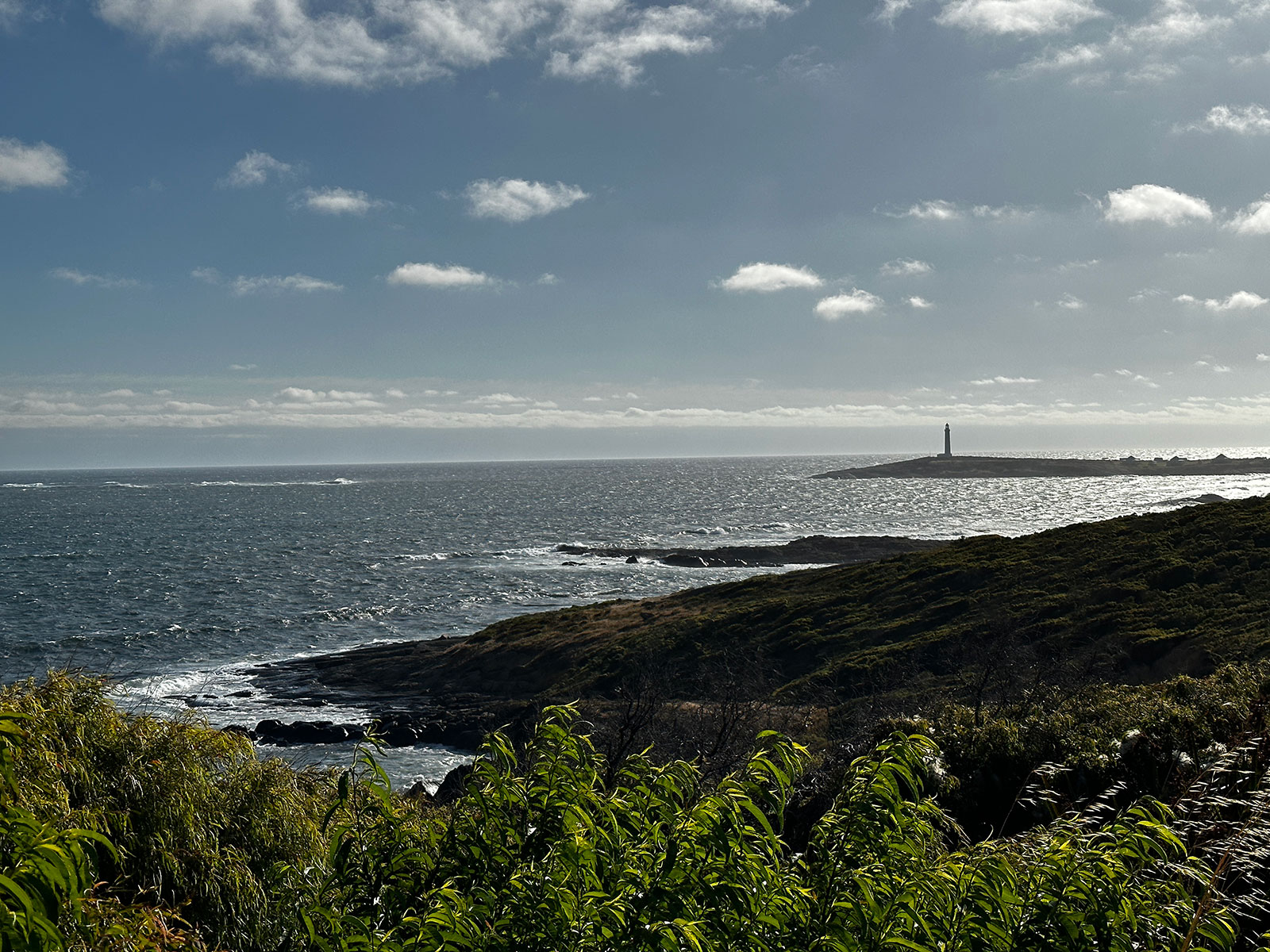Augusta, WA: Where two oceans meet

Western Australia's Augusta can feel like being at the world's end. Located 315km south of Perth, Augusta is the springboard to the continent's southern-west tip. It is where two oceans — the Indian and Southern — converge. Ever watching the collision course of two roaring seas is Cape Leeuwin Lighthouse: the tallest lighthouse in mainland Australia.
Indeed, Augusta is moving on many fronts. But the towering lighthouse is not the only thing that guards the coasts. And those oceans are not the only waterways that thrill. The quiet seaside town of 1400 entices a life by the sea in other ways, making it an extraordinary GPS coordinate to visit.
A brief history of Augusta
I was expecting to be shivering cold, being so south, but the sun gods looked down at Augusta in late April. Blue skies, the sun was shining; the air was fresh apple crisp. I just arrived after passing through the Boranup Forest along Bussell Highway. The enchanting one-hour drive connects Margaret River to Augusta, winding through karri woodlands that soar over 50 metres.
Stepping out, I quickly realised that being outdoors is a way of life in Augusta. The beautiful hamlet is sandwiched between national parks, Leeuwin-Naturaliste and Scott, and scenic waterways: the oceans, Flinders Bay and its inner water playground and Hardy Inlet — the mouth of the Blackwood River. The 270km-long river is Western Australia's longest continually flowing river, much of it fringed by wilderness.
Speaking of duration, Augusta is the state's third-oldest settlement, established two years after Perth in 1830 to claim the corner from French interest. However, the Dutch were the first Europeans who sighted the continent's southwestern tip in March 1622 and called it 'Landt van de Leeuwin,' meaning the land of the lioness. It has also been suggested that the town was named after the ship Leeuwin, which reached Batavia in 1622 (now modern-day Jakarta). Two centuries later, in 1801, during his circumnavigation of Australia, explorer Matthew Flinders renamed the tip Cape Leeuwin.


For more insight into the town's heritage, the Augusta Historical Museum is a great pitstop. The small museum celebrates the town's timber origins with a display of old woodworking tools and features an extensive shipwreck display. For truly unique viewing, there is a photographic exhibition recapturing the plight of 114 false killer whales that became stranded along the town's main beach in July 1986. The stranding attracted a massive community effort from across the region to save the whales, with 96 whales returning to sea.
Attracting whales to the coastline is more than just a once-off. Migrating humpback and southern right whales are spotted in Flinders Bay from mid-May to August. The bay is considered a 'resting point' for these ocean giants as they journey from Antarctica to warmer waters in the north. Multiple whale-watching tours are available to see their aqua aerobics at play.
A modern exploration

Besides grasping Augusta's history, it was time to get my bearings. Augusta River Tours runs two-hour scenic tours along the Blackwood River, guided by third-generation Augustan Graeme Challis. At $40 a pop, it's an inexpensive way to take stock of Augusta's pristine scenery.
The intimate boat tour departs from the 'Old Town Jetty' on Ellis Street. The jetty also lures avid anglers and is the launching pad for paddle pushers on kayaks and canoes. We bid farewell at 2pm, with Graeme wasting no time to launch into the telling of the region's ecosystem.
"We are sailing on black tea waters," Graeme said, noting the distinct dark brown river waters. Spotting wildlife is effortless. Over 60 bird species have been spotted in the lower section of the Blackwood River. Within moments of setting sail, we quickly passed a small sandbank crowded with sunbathing pelicans or what Graeme dubbed a “pelican party”. Gate-crashers to the pelican party included white-bellied pied cormorants and a lone black swan.
Besides wildlife flapping about, the only other movements came from seldom boats spotted here and there. My eyes were fixated on the forests fringing the waterway. Graeme soon alerted the entire boat to a white-bellied sea eagle — the second-largest bird of prey in Australia — clawing its feet onto a naked tree on nearby Thomas Island. It sensed our curiosity, soon unlatching its claws and flying off, its metre-plus wingspan appearing pterodactyl-like, casting its shadow flying over us — show off!
Moving through, we reached the shallowest part of the river, Hardy Inlet — a great spot to catch mullet and herring. A bit further on is Molloy Island. This island is a rarity in WA. Established in 1976, the 300-acre island — densely populated with jarrah, blackbutt, red gum, banksias and various native trees — has over 260 residential lots.
The public is not permitted to access the island community, with locals only able to use the island's ferry crossing. Many of us onboard envied their tranquil lives in a comfortable commune in the thick of nature. The sentiment was reinforced by seeing kids swinging off a rope along the riverbanks, making a splash on their doorstep — such is the simple life.
It's possible to get a taste of what's it like to live on Molloy Island with the namesake Molloy Caravan Park opposite the mainland. It's here where the boat turned around, journeying back to town. Graeme proved again that he has a keen eye, spotting an osprey perched in a paperbark tree along the inlet banks.
We sailed past a bopping precession of black swans, then soon saw another cluster in the distance — the weekly sail regatta. Several gusty white sails dotted the river, with the Leeuwin Naturaliste Ridge rising in the distance. Karri trees stood like sparse hairs on the range. The scenescape a marvellous display of watercolours.
All along the watchtower
 Cape Leeuwin Lighthouse (Image Tourism WA)
Cape Leeuwin Lighthouse (Image Tourism WA)
Two words of advice when visiting Cape Leeuwin Lighthouse: Bring the puffer jacket, and don't bother to spend time on your hair; all the effort it takes to look decent is gone into the wind.
The 32m tall lighthouse is at the crux of where two oceans meet. It's an incredible place to find yourself at this pointy end of the country, just 9km south of Augusta. Add a few thousand kilometres south to your journey, and you will arrive in Antarctica.
Commissioned by Premier Sir John Forrest, Cape Leeuwin Lighthouse was built in 1895 from local limestone to aid shipping between Fremantle and Albany. Its sister lighthouse, Cape Naturaliste, was built eight years later and is located 111km north. Both beacons are markers for the famous Cape to Cape coastal walking trail.
The lighthouse is more than just a glowing golden eye. It's an open-air museum with the Interpretive Centre housed within one of the former lighthouse keepers' cottages. If visiting on an extremely windy day, you'll find yourself running towards the centre and, perhaps, staying longer than intended. Inside, you'll brush up on all there is to know about lighthouses as well as this lighthouse’s history and keeper alums through interactive displays.
I found my 'Dutch courage' to brace the wind factor and head towards the light. My hair rivalled a headbanging, long-haired rocker, thrown in all directions with every gust while walking along the peninsula. But there was respite, standing at the entrance of the lighthouse. To enter, you must hop on a guided tour to the top of the lighthouse, where double ocean views are guaranteed — a rare claim.
More hair-raising is coming back down from dizzying heights to witness the oceans’ might. Under the lighthouse's shadow is a platform to see where the two oceans meet. A blue signpost directs each — the Southern Ocean on the left, the Indian Ocean on the right. Beyond the platform, a rugged outcrop gradually slopes down to the ocean. Giant waves pounded the coastline and made for a gnarly sight, spray taking flight with each coastal crash. Now that's metal.
Stingray sightings

It was a busy time with Augusta's three caravan parks booked out, so we opted to stay in nearby Hamelin Bay. Beachfront caravan park, Hamelin Bay Holiday Park, is 18km north of Augusta and offers unpowered and powered sites and multiple ablution blocks nestled among peppermint trees.
The popular caravan park is adjacent to the region's other famed coastal guard. Located within Ngari Capes Marine Park, Hamelin Bay is renowned for its patrolling stingrays, frequently spotted gliding along the coast.
Within a few minutes from our campsite, the rays appeared like black diamonds, hovering just metres from sandy toes. It's as if the rays are privy to a crowd closely monitoring their movements from shore, flapping part of their wings above water as if flirting with us onshore. Talk about a flip tease.
Besides famous rays, this coastal stretch is a great place to spot wildlife along the bay's elevated boardwalk. The bay's vodka-clear waters entice for a dip but be mindful of potential barbs! To swim, make a right along the beach, past the 1882-built Hamelin Bay jetty remnants to avoid patrolling rays.


Recovery session
The town's main pub at Augusta Hotel Motel is like entering a time warp. Built in 1912, the hotel interior's dated fixings — diamond-patterned carpets and mustard walls and roofs — add to its old-fashioned charm. Over the years, the hotel has received extensions, making it a labyrinth to walk through.
Adding to its retro lure, the pub offers affordable eats, with some items priced as if sold two decades ago. (A massive bowl of chips for $7 did not go unnoticed by this writer!) But what else makes up for its dated designs is the hotel's location, two blocks from the river.
I sat along the outdoor decking to appreciate the town's vantage point. The pub sits hilltop, overlooking a field of green (perfect for lawn bowls), the Blackwood River and Flinders Bay. With the sun shining, it is a great spot to linger for hours, revel with locals and appreciate that 'the world's end' looks good here.
Fast Facts
Hamelin Bay Holiday Park
P: (08) 9758 5540
E: bookings@hamelinbayholidaypark.com.au
Augusta River Cruises
P: 0409 377 809
E: graeme@augustarivertours.com.au
Cape Leeuwin Lighthouse
P: (08) 9757 7411
E: info@capesfoundation.org.au
THE NEXT STEP
Are you ready to experience the freedom of the open road? Don't wait - Find your dream getaway now!
RELATED ARTICLES:
Tourism and holiday parks with a difference: Mandalay Holiday Resort







